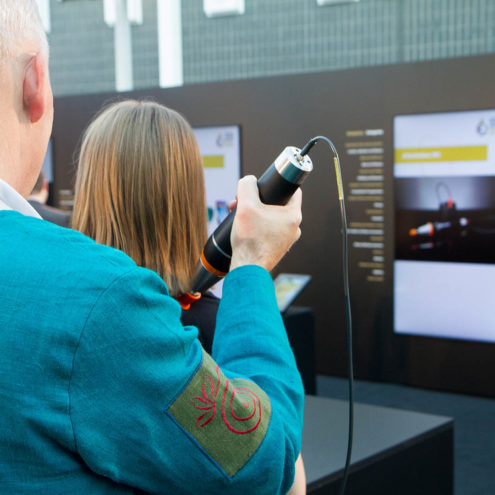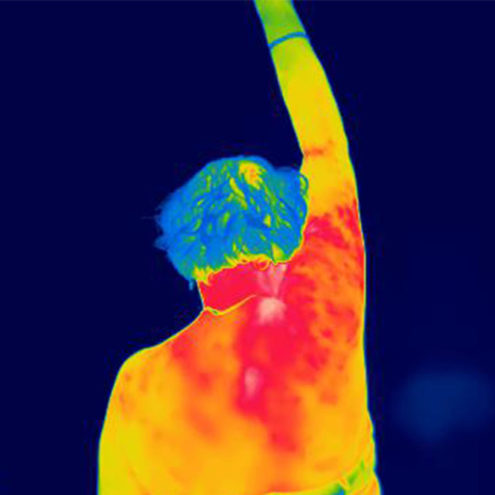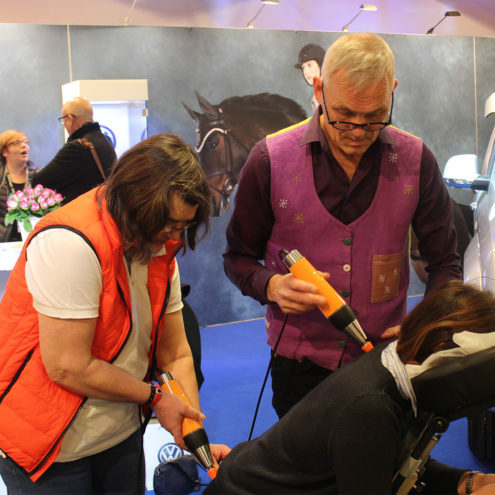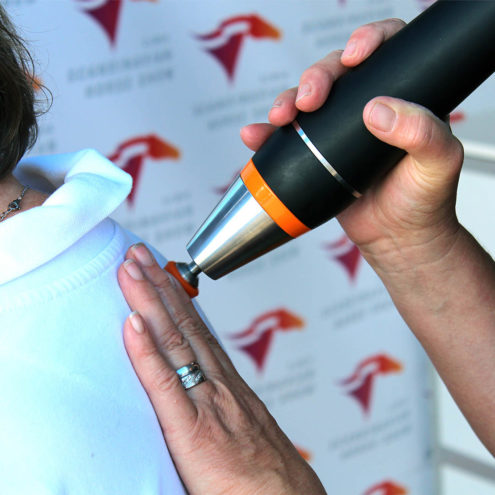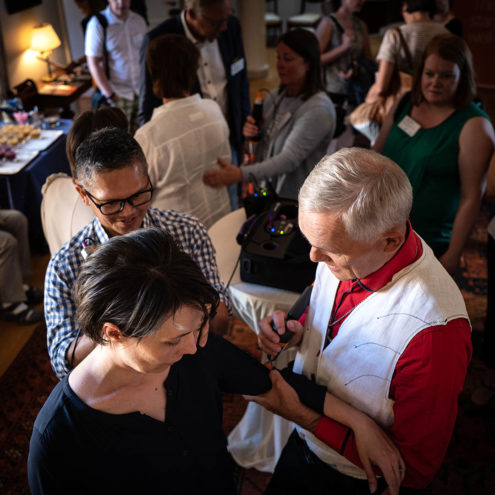Piriformis Syndrome Treatment
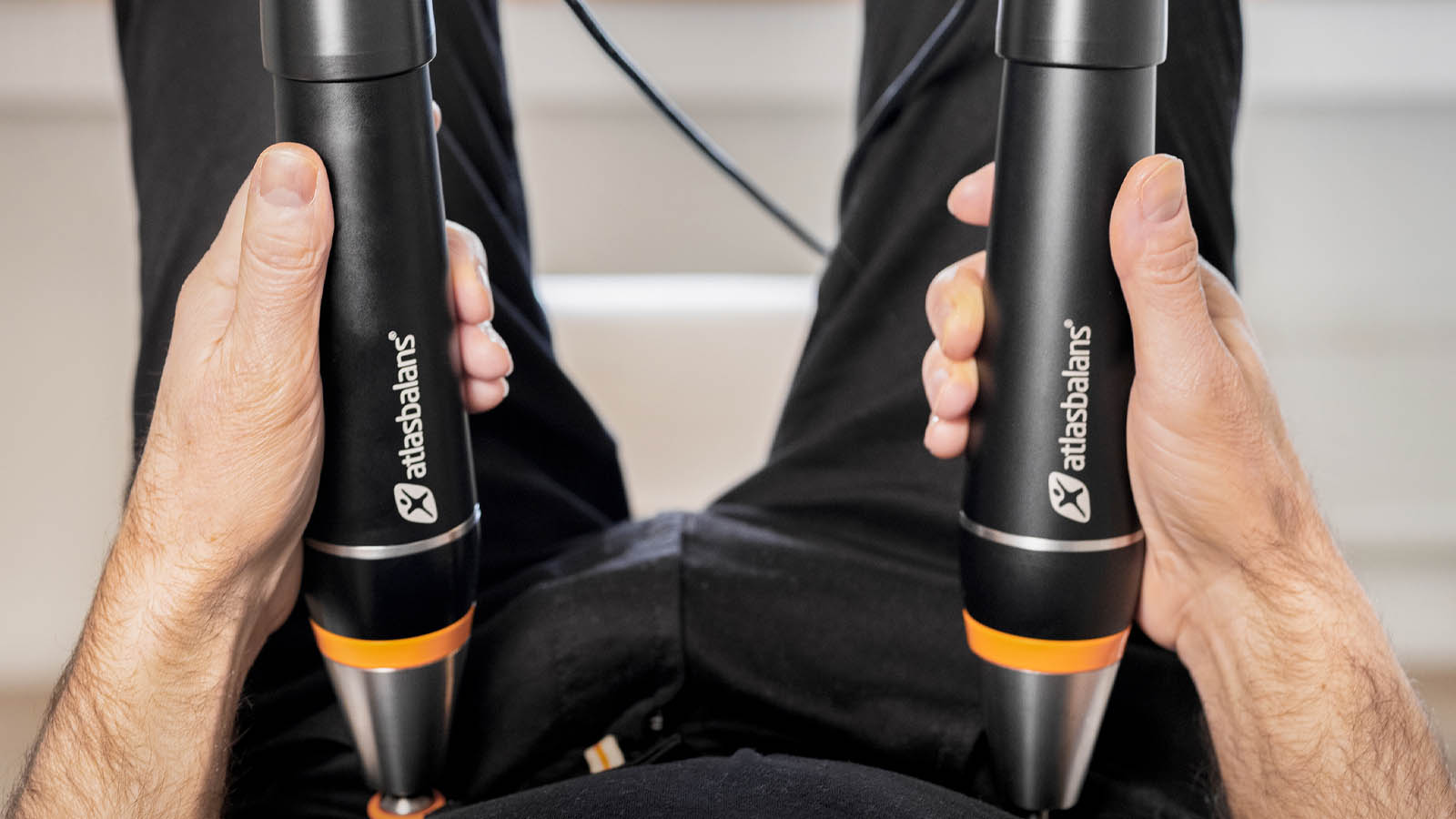
The piriformis is the name of a muscle that extends between the sacrum of the pelvis and the large femoral head/hip ball, the greater trochanter. The muscle lies deep down under the large gluteal muscles along with several other small muscles. Together they form a group called the external rotators. These perform, as the name suggests, outward rotation of the hip joint. They also do abduction/extension and extension of the hip joint.
Despite its size, the piriformis can cause a lot of pain when irritated. The sciatic nerve passes through the piriformis and it can pass under, over or sometimes right through the muscle. Its proximity to the muscle makes the sciatic nerve sensitive to pressure changes and can easily become irritated and trigger pain. Piriformis syndrome is named after the typical problems the piriformis muscle can cause.
What causes Piriformis syndrome?
Piriformis syndrome is caused when the piriformis muscle, alone or together with one of the other small deep gluteal muscles, becomes overworked and cramps. The muscle then presses on the sciatic nerve that lies close by. The sciatic nerve responds and sends pain signals.
Piriformis syndrome can also be caused by a direct muscle injury, such as a muscle tear or strain. The muscle swells and the sciatic nerve is put under increased pressure.
The piriformis can become overstretched if movement in the hip joint and back is not optimal. If our hip flexors are too stiff, our pelvis is tipped forward and the piriformis has to work harder to extend the hip.
An unbalanced pelvis can create misaligned and overstretched joints, ligaments, muscles and fascia. Sitting a lot, especially on hard surfaces, makes the seat and hip muscles stiff more easily. You should also avoid storing things in the back pockets of your pants as this can strain the muscle.
When walking, excessive outward rotation of the hip joint and overpronation of the foot can also cause the piriformis to become overstretched.
The piriformis muscle itself can also become stiff and contain several myofascial trigger points that can cause pain.
Why do I have Piriformis syndrome?
If the muscle is not injured, it is often your lifestyle that causes piriformis syndrome. A monotonous working position with too much sitting is a common cause. Keeping things in your back pocket can also strain the muscle. If the hip flexors are short and stiff, the piriformis and other muscles have to work harder to stretch and externally rotate the hip joint.
An unbalanced and oblique pelvis also causes the piriformis to affect the sciatic nerve more. Often, an unbalanced pelvis is the result of short and stiff hip flexor muscles. Stiff hip flexors often occur during long periods of sedentary work
Symptoms of Piriformis syndrome?
The symptoms of piriformis syndrome can be back pain, similar to the pain caused by sciatica, as it is the same nerve that is affected. In piriformis syndrome, the pain from the sciatic nerve can radiate down to the back of the knee. This syndrome is then called false sciatica. A ‘true’ sciatica occurs when there is a disk injury between two vertebrae that presses on the nerve. The pain usually radiates down to the foot, not just the knee.
Piriformis syndrome can cause severe pain in the seat in the form of myofascial trigger points where they run as a line between the sacrum and the greater trochanter of the femur. Sitting still for a long time can aggravate the pain in the affected side of the seat. The pain can be persistent and may worsen with walking, running and climbing stairs. It may feel like the whole buttock is cramping.
Piriformis syndrome in pregnancy
During pregnancy, the characteristics of the fascia change due to the major hormonal changes in the body. The body becomes softer and at the same time less stable. The body’s center of gravity changes, which also changes the load on joints, fascia structures and muscles, making it easier to create imbalances. At the same time as the body’s mobility is limited and you may stay more still, the hip flexors, piriformis and other muscles in the pelvic region become shorter and tighter. Reduced mobility also leads to reduced flow in tissues.
When and where should I seek treatment for Piriformis syndrome?
Piriformis syndrome can cause severe pain and restrict movement, which can lead to other misalignments and compensations. It is therefore important to seek help as soon as possible and address the cause of the problem. Fascia treatment at Fascia Clinics can help treat piriformis syndrome.
How is Piriformis syndrome treated?
Fascia clinics analyze the whole body and how it is stressed. The pelvis and back are examined to see if they are in balance. Are there any asymmetries and compensatory patterns? During treatment, the pelvis is adjusted and tissues and structures are relieved. The treatment aims to create better balance and function in the body, thereby removing the cause of piriformis syndrome. The treatment is performed both manually and with gentle vibrations. It also improves the flow in the fascia so that nutrient supply, slag cleansing, lymph drainage and more work better. The treatment is often experienced as very pleasant. Tight fascia and muscles relax, allowing the body to regain a more correct balance. More treatments are usually required to achieve a lasting result.
Piriformis syndrome – What can I do myself?
It is important to vary your working position and take small breaks. Physical activity in your free time can also be important to prevent tight and short muscles around the hips and seat. Walking and regular, but not too strenuous, exercise are good for circulation in the muscles.
Stretch both hip flexors so that they are not too short and tight.
Avoid unnecessarily straining your seat muscles. Don’t keep things like your wallet or keys in your back pocket.
Placing something warm such as a wheat pillow or hot water bottle on the seat can ease the pain.


Exercises for Piriformis Syndrome?
If you suffer from piriformis syndrome, it is important to stretch the muscle and the hip flexors on both sides daily. Preferably several times a day. If the hip flexors are too stiff, the piriformis and nearby muscles have to work much harder to stretch the hip. If the piriformis muscle is very overworked and cramps, it should not be stretched.
Lie on your back with your legs resting on a chair, stool or similar. The hip and knee joints should be at 90 degrees. Rest your arms at your sides with your palms facing upwards and breathe deeply. Gravity will ‘pull’ the pelvis back to its original position, allowing asymmetries and tensions to even out. Lie down for at least 15 minutes.
Lying piriformis stretch. Lie on your back with your knees bent and feet on the floor. Grasp your left knee and bring it closer to your chest. Now take your right leg and twist it outwards away from your body. The right ankle should rest on the left thigh below the knee. Grasp your left knee and pull it closer to your chest. You should feel a clear stretch in the seat. Hold the stretch for at least 60 seconds. Switch legs and repeat.
Seated piriformis stretch. Sit on a chair with a straight back. The hip joint should be bent at 90 degrees. Place the ankle on the opposite knee. Lean forward without looking up until you feel a stretch in the seat. Hold the stretch for at least 60 seconds. Switch legs and repeat.
Stretch hip flexors.Take a step forward with any leg and keep the knee of the other leg on the ground. Keep your back upright. Place your hands on your hips and gently push your hips forward until you feel a stretch. Avoid falling forward with your back. Hold the stretch for at least 60 seconds. Switch legs and repeat. Variation: Step forward and place your foot on a chair, stool or similar. Keep your back straight. Gently push your hips forward until you feel a stretch. Hold for at least 60 seconds. Switch legs and repeat.
Piriformis syndrome – frequently asked questions
What is piriformis syndrome?
Piriformis syndrome is when the sciatic nerve becomes pinched and sends pain signals from the buttock down to the knee. The pinching occurs due to increased pressure from the piriformis muscle in the buttock.
Is it dangerous to have piriformis syndrome?
No, it isn’t. Having piriformis syndrome is not dangerous, but it can affect a large part of your daily life.
How do I avoid piriformis syndrome?
The most important thing is to have and maintain good circulation and mobility in muscles, joints, fascia, etc. Light regular exercise and stretching are good tools to counteract problems. Avoid sitting still for a long time and keeping objects in your back pocket that can irritate the sciatic nerve.
Can I exercise with piriformis syndrome?
Light exercise focusing on movement and circulation is fine to do. Heavy strength training or long cardio sessions should be avoided as these can wear out the muscles and prevent the body from healing.
 Search
Search


